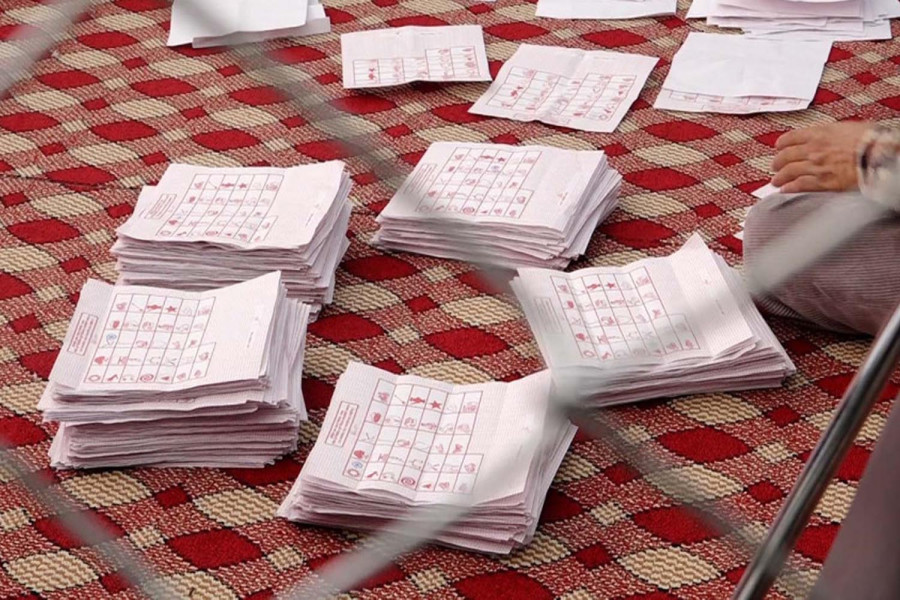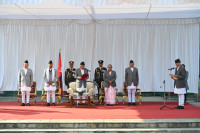National
After ballot paper mix-up, calls grow for shift to electronic voting
Election observers blame polling officers for the problem.
Binod Ghimire
In Ilam constituency 1, some 100 ballot papers of the first-past-the-post (FPTP) elections for the House of Representatives were found dropped into the boxes meant for FPTP votes for the provincial assembly. Similar thing happened at a polling centre in Rukum East.
During Sunday’s elections, there were four different ballot papers—one each for FPTP and proportional representation (PR) candidates of federal parliament and provincial assembly—that were to be dropped in four different boxes.
In the press meet after the conclusion of the voting on Sunday, Chief Election Commissioner Dinesh Thapaliya had said they had received several complaints of ballot paper mixup. Following such complaints, the commission decided to count the votes under all four categories—FPTP and proportional representation of both the lower house and provincial assemblies—simultaneously.
“The weakness of the polling officers is mainly responsible for the problem,” Ram Prasad Bhandari, a commissioner, told the Post. “I don’t think the voting process was confusing. This situation would have been easily averted had the polling officers, and also the voters, been a little more careful.”
The ballot paper for each category was given to the voter one after another and the voter would get the next ballot paper only after casting the ballot paper on hand.
Poll observers also point out the weakness of the polling officers for the problem. “The votes got mixed up because the polling officers couldn’t make proper voting arrangements,” Pradip Pokharel, chairperson of the Election Observation Committee, Nepal, told the Post.
For instance, re-election was held in one of the polling centres in Tulsipur in Dang district on Sunday itself after it was found the polling officers distributed ballot papers for provincial assembly only. Only after over 100 people had cast their votes, it was found that the voters had not voted for the House of Representatives.
Earlier the commission had said they would complete the counting of votes under the FPTP category for both the lower house and the provincial assemblies in the first three days and then start counting the PR votes. However, the ballot paper mixup compelled the commission to count the votes under all four categories simultaneously.
Election observers say the mismanagement in voting and delay in counting votes has shown that the country should switch to electronic voting. “We can’t afford to waste days in counting votes in every election,” said Pokharel. “It has already been late to adopt electronic voting.”
The commission in the first Constituent Assembly elections had used Electronic Voting Machines as a trial in Kathmandu constituency 1. Though the trial was successful, the machines were never used in other elections.
“There are drawbacks of electronic voting machines as well. However, the commission is always ready to switch to electronic voting,” said Bhandari. “Let’s see what happens in the next elections.”




 17.12°C Kathmandu
17.12°C Kathmandu















